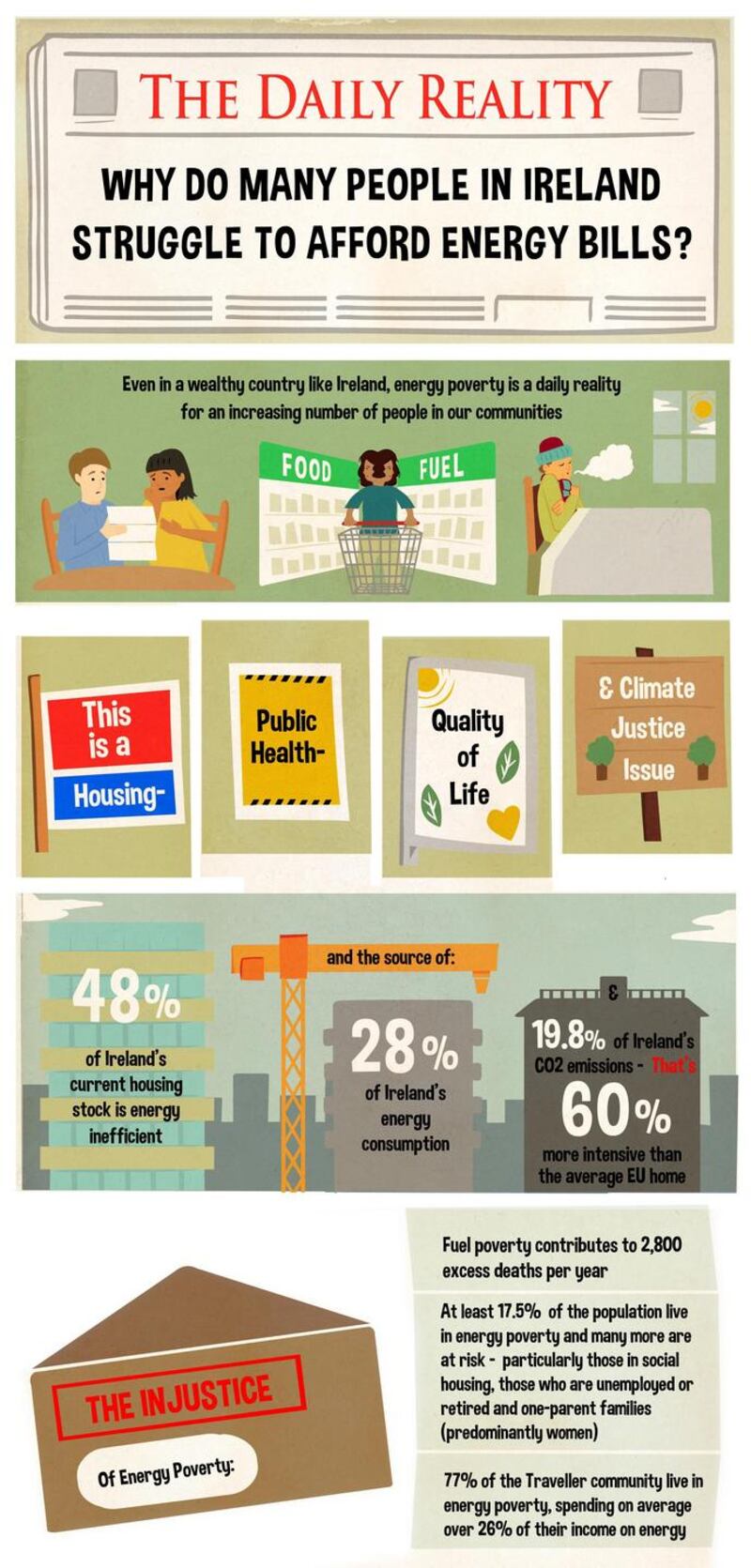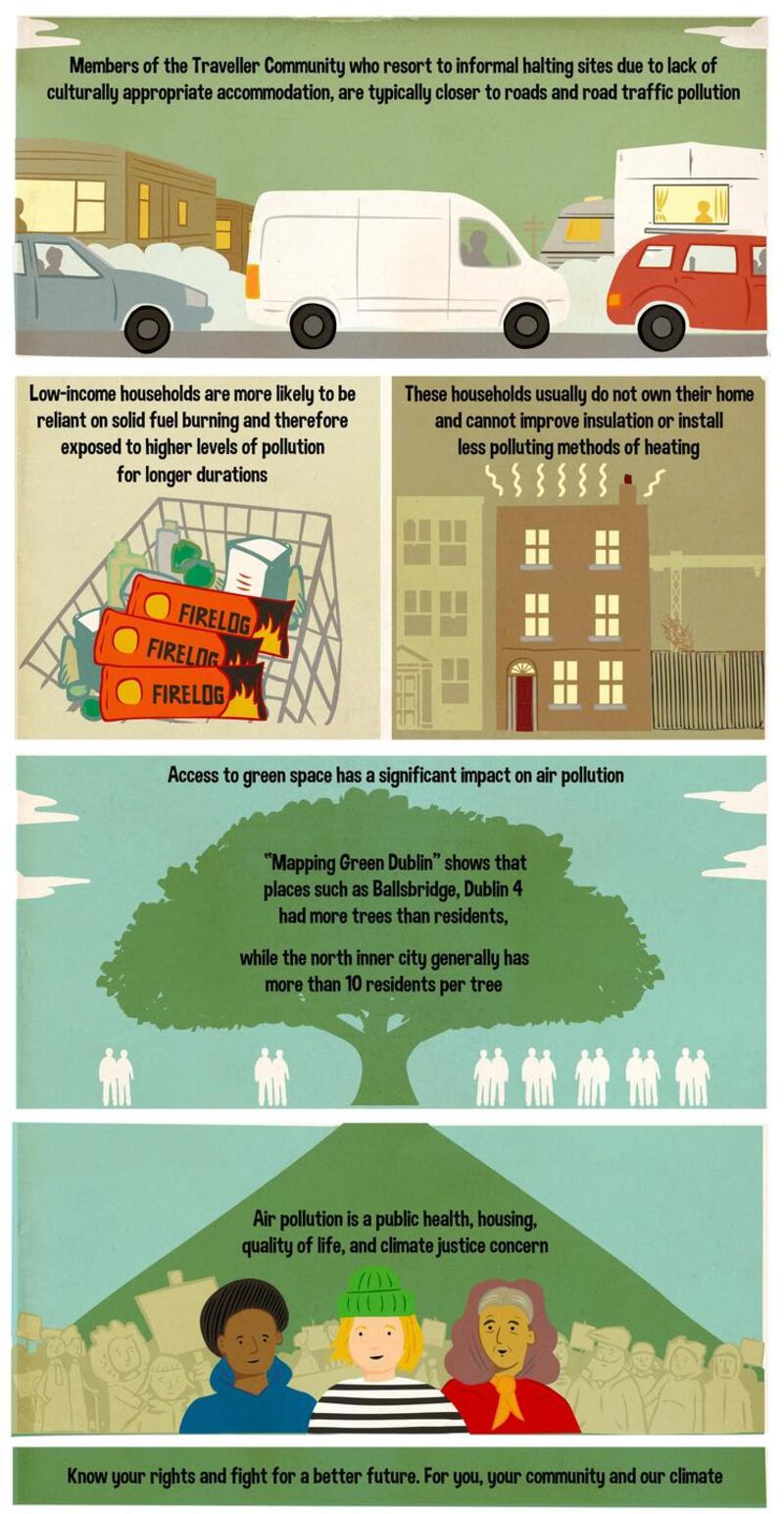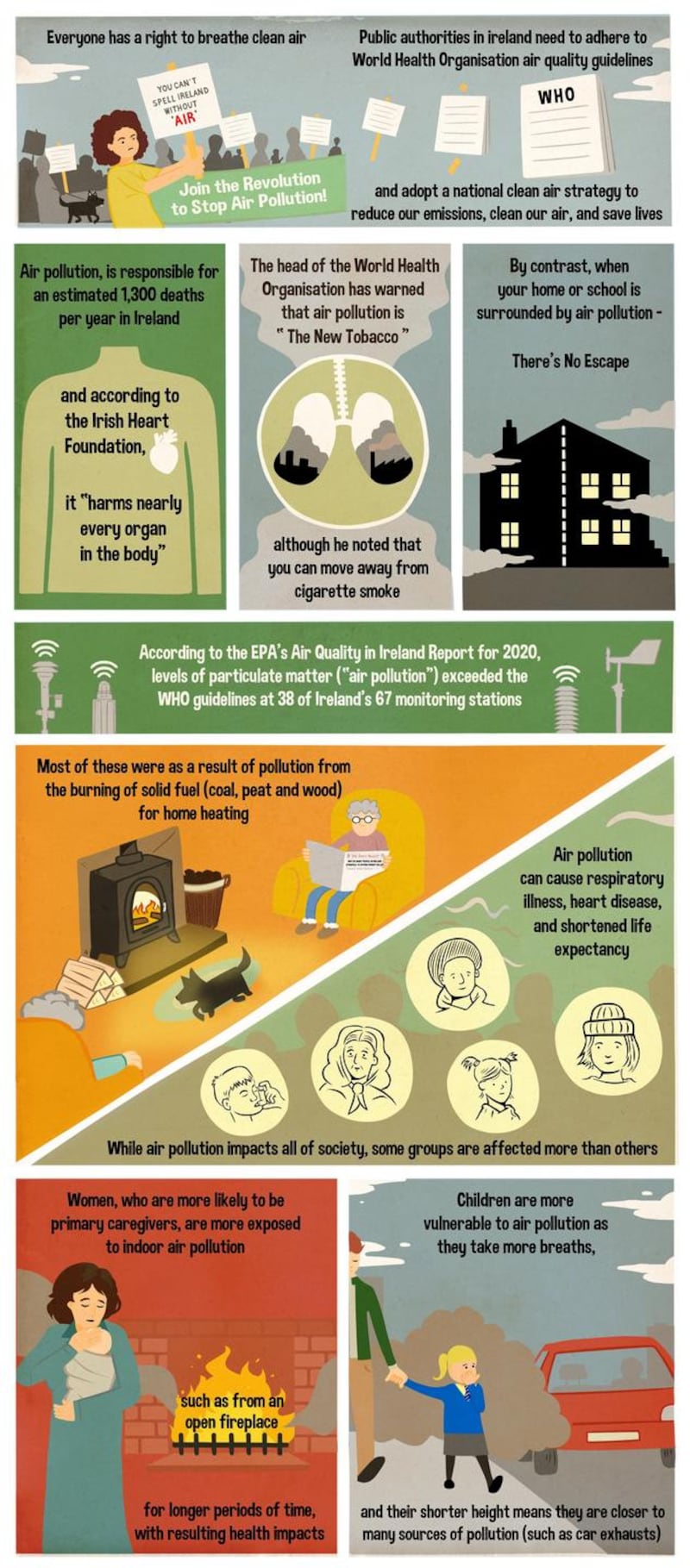Even for those who are interested in climate change and the environment, the topic isn’t always easily accessible. Working your way through the jargon and terminology, you sometimes feel a little like that passenger on the upper deck of the bus admitting: “I don’t know what a tracker mortgage is.”
Even for climate-change anoraks, there are some tricky concepts: tonnes of carbon dioxide equivalent; gigawatts of energy; carbon sequestration; protected urea in agriculture; green hydrogen energy; biogenic methane emissions.
For Ireland’s poorest and most marginalised communities, these concepts can be hard to grasp even though they are often the worst affected – not only by the impacts of climate change but also from the measures taken to reduce carbon emissions.
A new report, Environmental Justice in Ireland, shows that poorer, marginalised communities have been excluded and sidelined from debate and policy decisions on the environment and climate change even though they often bear the brunt of its effects.
It is based on the first in-depth research of its kind conducted by Dublin City University’s (DCU) Centre for Climate and Society, and Community Law and Mediation (CLM), an independent community law centre and charity.

The report found that there are multiple barriers to poorer and vulnerable communities becoming involved in decisions. These include high fees, complex online engagement, and lack of engagement.
To address this, researchers spoke to these communities and conducted a major workshop in an attempt to give voice to those groups on the margins of society. They could articulate for the first time how climate change impinges on their lives.
“Why did it take a pandemic for there to be investment in Traveller sites? Who is making the decisions?” asked a representative for the Travelling community. “There’s 529 traveller families who live on unofficial sites. And quite often they’re the most affected in terms of not having access to running water, not having access to toilet facilities, sanitation facilities.”
“And that was very evident, obviously, during Covid, in terms of the emergency response that had to be put in place. There was €4 million spent last year on just the very basics in terms of water tanks for Traveller sites around the country.”
An inner city representative said that residents who didn’t own a car often suffered the worst effects of car pollution: “I think Dublin 8 has the lowest car ownership in the city, but [the area has] poor air quality.”
“Traveller halting sites and refugee centres are very much hidden from the rest of the community in some way,” said another workshop participant. There was a common view that the most vulnerable and poorest communities often lived near busy roads, where there were poor public transport links, in sub-quality buildings, and in places where air quality and water quality were worst.

"The Environmental Protection Agency estimates that 1,300 deaths are caused by air pollution annually in Ireland. While studies have linked increased hospital admissions with air pollution exposure in certain disadvantaged areas of Dublin, there is no published research on the impacts on children of poor air quality," the report states.
The team led by Dr Diarmuid Torney, and lead author Sadhbh O’Neill, conclude: “The participants in our workshop perceived their communities to be largely excluded from environmental and planning decisions. They expressed frustration with consultation processes, where the final decisions sidelined their concerns altogether.
“Low-income, migrant, and Traveller communities have difficulties in getting their voices heard, especially in an era where many decisions end up in the courts, where legal costs are prohibitively expensive.”
“One of the areas where both environmental pollution and climate policy has significant impacts on vulnerable communities is in relation to energy poverty. Carbon taxes add to the cost of fossil fuel heating, and are regressive. For this reason, energy poverty must be tackled in ways that support low-income households whether in the rented, privately owned, or social housing sectors with income support, along with retrofitting measures.”

The project went one step further. Rather than simply publish its findings, it tried to make the research meaningful to those communities it had targeted.
To that end, CLM, and its chief executive, Rose Wall, developed a series of simple infographics (illustrated by Eoin Whelehan), tailored for schools and community organisations. Simple in their presentation and messaging, they are so good that they offer a valuable resource for just about anybody struggling to understand the big concepts of air pollution, climate change, energy costs, and fuel poverty. The only thing not explained is a tracker mortgage.











